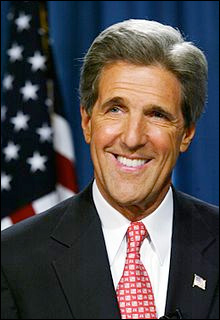We wish you the best for the happiest of Thanksgiving holidays. The PRIsm Political Updates will return Monday, Nov. 26.
The official state participation and candidate preference statistics are being released throughout the nation, and many of the numbers are quite surprising. While turnout was down nationally, it was up in most of the battleground states and, despite Pres. Barack Obama’s victory, it may be erroneous to assume that the turnout pattern completely favored him.
While it is clear the president obviously benefited from the voting preferences of the aggregate group of people who cast ballots during the election process, it is interesting to note that he was only able to return 91.5 percent of the total vote he received in 2008. In contrast, losing national Republican nominee Mitt Romney retained 99.4 percent of John McCain’s 2008 vote. Obviously Romney needed to do better than to simply equal McCain’s vote, but it is significant that Obama’s share of the vote declined by almost a full 10 percent from what he obtained four years ago, especially when understanding that the Obama campaign clearly had the superior grassroots organization.
Nationally, and rather astonishingly from what was widely forecast before the election, overall voter turnout was down six million votes from the number cast in 2008, or a fall-off of 4.7 percent. It appears that virtually all of the drop-off came from the Obama coalition, as the president’s vote receded by almost that same amount as did the national turnout (voter participation reduction: 6,148,768 individuals; Obama drop: 5,917,631 votes).
The four core states also recorded interesting turnout patterns. Of the quartet of places that Romney needed to convert if he were to unseat the president, it was North Carolina — the only state in this group that he did carry — that had the highest participation rate increase from 2008. North Carolina voter turnout was up 4.5 percent in comparison to their aggregate number of voters from four years ago. Virginia and Florida, two of the three core states that remained with the president, also saw increased participation. Virginia was up 3.5 percent; Florida 1.0 percent.
Ohio, often believed to be the most important state in the presidential contest because it was viewed to be a national bellwether, surprisingly recorded a lower turnout this year than during the previous Obama victory campaign. Ohio turnout was down a rather substantial 5.9 percent, or greater than 336,000 participants from 2008.
Of those seven states commonly viewed to be in the secondary target group — at least one of which Romney would have had to have carried to be successful, more if he failed to carry all of the core states — four saw increased participation, and three declined. The states producing a greater number of voters were in the Midwest (Wisconsin, up 2.4 percent; Iowa, increasing 1.9 percent) and West (fast-growing Nevada adding 4.5 percent; Colorado, up 3.1 percent).
The three eastern and Mid-Atlantic states all recorded a smaller voter participation rate. Pennsylvania, always considered a swing state and a place that attracts a great deal of campaign attention, saw its voter turnout rate fall 6.1 percent; Michigan, the only state in the Union that actually lost population in the preceding decade, dropped 5.7 percent; and New Hampshire returned almost the same number of voters, coming in just 5,091 ballots under their 2008 total.
It appears the biggest voter drop-off occurred in some of the nation’s largest states, those that are most Democratic and among the president’s strongest places. His home state of Illinois, for example, saw more than 431,000, or 7.8 percent, fewer people vote this year than when compared to their favorite son’s first election in 2008. New York had the largest drop-off, a stunning 19.8 percent below its participation level of four years ago. California, the nation’s largest state, was off 12.5 percent. But, lower turnout rates were not confined only to the large Democratic states. Texas, the biggest and most loyal Republican entity, also saw a reduction in turnout. Over 112,000 fewer voters went to the polls in 2012 when compared to 2008.
More analysis will be completed when additional data is available, but these statewide turnout numbers may have produced more questions about the nation’s voting patterns than answers.


